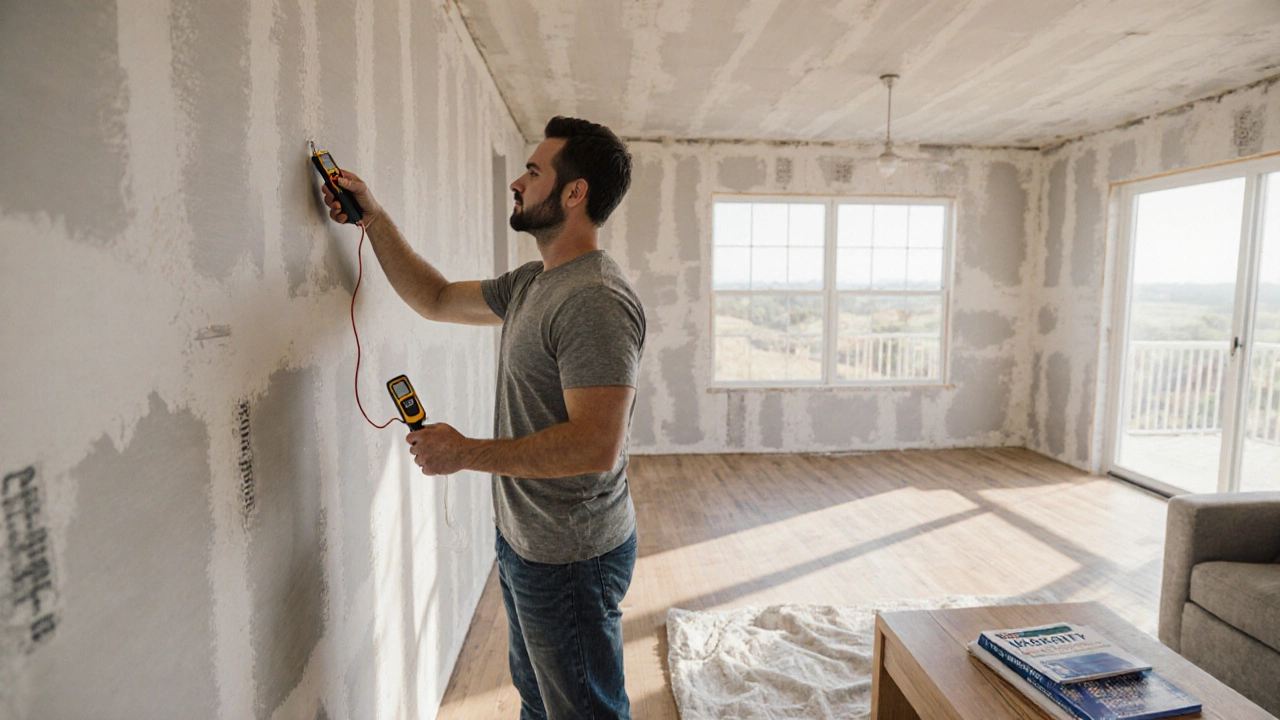Primer for New Houses: What You Need to Know Before You Move In
When you buy a new house, the primer for new houses, a protective coating applied before paint to seal surfaces and improve adhesion. Also known as undercoat, it’s not optional—it’s the foundation of lasting finishes. Most builders use cheap, watered-down primer—or skip it entirely—to save time and money. That’s why you’re seeing peeling paint, uneven color, or stains bleeding through within months of moving in. A proper primer seals porous drywall, blocks moisture from trapped construction dust, and creates a uniform base so your paint looks professional and lasts longer.
It’s not just about paint. The moisture control, the process of managing humidity levels during and after construction to prevent mold and structural damage. is often ignored until it’s too late. New homes are sealed tight for energy efficiency, but that traps water from concrete curing, drywall mud, and even rain during framing. Without proper ventilation and moisture barriers, that dampness finds its way into walls, behind trim, and under flooring. That’s why mold shows up in new builds—not because you’re careless, but because the system failed before you even opened the door. A good primer helps, but it’s only one piece. You also need to check for vapor barriers, exhaust fans, and whether the HVAC system was balanced before occupancy.
Then there’s the builder finishes, the low-cost, fast-track materials and methods builders use to complete homes quickly and within budget.. These include thin drywall, low-grade joint compound, and skip-primer jobs on ceilings and trim. They look fine at the open house. But after a few seasonal changes, gaps open, paint cracks, and nail pops appear. A DIY primer job after move-in can fix a lot of this. Sand the problem spots, clean off dust, apply a high-quality bonding primer, then repaint. It’s cheaper than hiring a contractor, and you’ll know exactly what’s under the paint.
You’ll find posts below that dig into mold in new homes, foundation cracks that show up after the first winter, and how to spot when a builder cut corners on materials. Some explain why certain paints fail on new drywall. Others break down what a real primer should cost, and how to test if your walls were even prepped properly. This isn’t about perfection—it’s about protecting what you paid for. Don’t let a skipped step turn your new house into a repair project. The right primer, applied the right way, buys you years of peace.
Can I Paint a New Build? Essential Tips for Homeowners
Learn if you can safely paint a new build, what warranties allow, and the best primer and paint choices for fresh drywall.
Learn more...